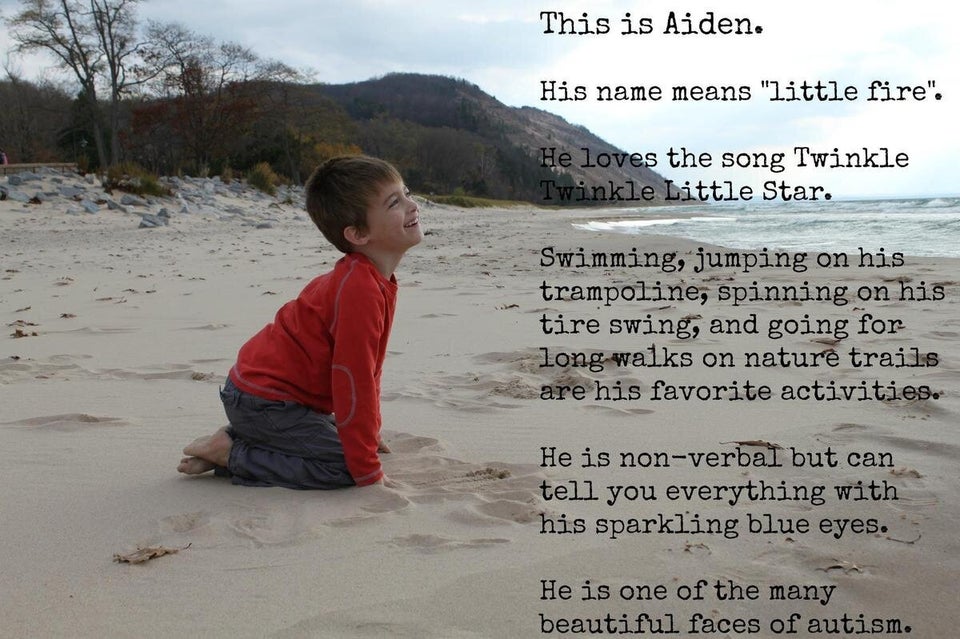Odds are good that you or someone close to you knows a person with autism spectrum disorder (ASD): an estimated 1 in 68 U.S. children has been identified with ASD, with similar stats in Canada. But you may still feel that you don’t understand ASD, have an up-to-date idea of how autism is diagnosed, or even know why it’s called a spectrum disorder.
Part of this is because the medical understanding of autism is still changing. For example, when DSM-V (Diagnostic and Statistical Manual of Mental Disorders) was published in May, all autism disorders were merged into one umbrella diagnosis of ASD — meaning that conditions you may have heard of, like Asperger Syndrome, are no longer used from a clinical standpoint.
So what does this mean for our modern understanding of what autism is, what the spectrum means, and what symptoms are seen in people with autism? Read on for more information on how autism is diagnosed and how its symptoms may vary.

What does “on the spectrum” mean? A spectrum disorder is a mental disorder with a range of linked conditions and a variety of subgroups that make up one syndrome. "Typically, what defines where an individual falls along the spectrum is determined by how large a role their symptoms play in impacting their ability to thrive in social, occupational and educational settings,” explains Natalie Moore, a holistic psychotherapist who works with autistic patients.
Why is it called a spectrum? "Autism is referred to as being on a spectrum mainly due to the varying intensity of symptoms observed from one individual to another,” says Moore. For example, one person with autism could have mild symptoms, another could have very severe symptoms, and the next could be somewhere in between. The term spectrum reflects the wide range of symptoms and abilities any individual person with autism could have.
Symptoms themselves range greatly: Another reason why autism is called a spectrum disorder, Moore says, is because it involves a wide range of symptoms themselves. "Autism affects many mind/body systems such as emotional regulation, language development, social engagement, motor function, sensory processing, and visual-spatial ability, among others,” she says.

How is mild, moderate, or severe autism determined? The ways autism is described can mean very different things from one person to another. "Terms such as mild, moderate and severe are entirely subjective, but prove useful in clinical settings to briefly present a case,” Moore says. And someone may have mild symptoms in one area of autism, such as motor coordination, and more severe symptoms in another, like verbal communication.
What’s a splinter skill? Some people with autism may have what is sometimes called a “splinter skill,” or an exceptional ability in a niche area. “Someone with a 'splinter skill’ with satisfactory social skills can excel in certain fields that require an immense amount of specific knowledge, such as teaching, or require little socialization, such as STEM field work,” Moore says. But not everyone with autism has a "splinter skill."
Is Asperger’s still used? You may have heard of Asperger Syndrome, previously considered a subtype of autism characterized by difficulty with social interactions, potential motor delays, and a restricted range of interests or repetitive behaviours but without significant difficulties in language skills or cognitive development. In the DSM-V, Asperger’s was integrated into the overall autism diagnosis so it’s no longer a clinically current term, Moore says. “However, a large population of individuals identify with the Asperger’s diagnosis and feel that it describes them well,” she says. "Therefore, many continue to use the term to self-identify and to connect with other individuals to seek support."
What is PDD-NOS? The acronym PDD-NOS referred to Pervasive Developmental Disorder-Not Otherwise Specified, a term that has in the past been used interchangeably with ASD. It was previously applied to children or adults who fell on the autism spectrum without fulfilling the criteria for ASD or Asperger’s. However, with DSM-V, PDD-NOS was integrated into the autism diagnosis.

Autism can change over time: What autism looks like in any individual person can change over time for a variety of reasons — including treatment. "Where an individual falls on the spectrum will often change following treatments, because the goal of treatment for individuals with autism is to help them have as independent and meaningful a life as is possible,” Moore says. For example, treatment can help people with emotional regulation, communication, social skills, or motor coordination, among other things, she says.
Use person-first language: Calling someone “an autistic” is not just outdated, it’s also harmful and reductive to the person’s experience as a full human being. "I’m an advocate of person-first language, which encourages people to refer to those with a health diagnosis as 'An individual with [enter diagnosis here]' as opposed to 'an autistic,’” Moore says. "The former indicates that this is a person with many qualities, of which one of them is autism, whereas the latter presumes that autism is the person’s defining characteristic."
Also on HuffPost
